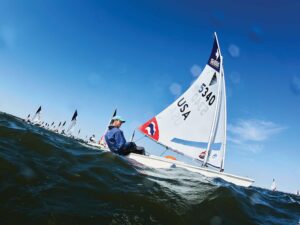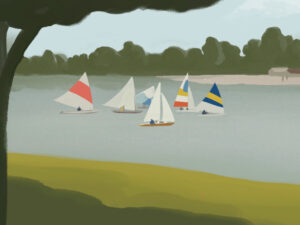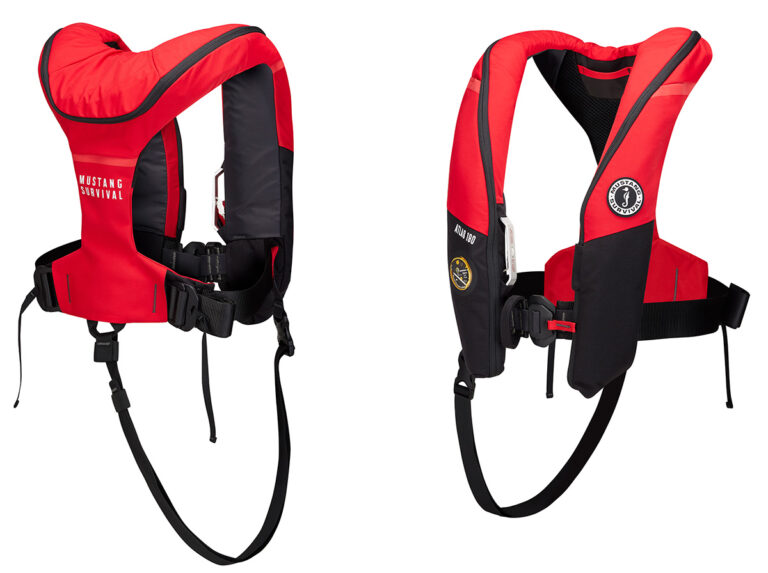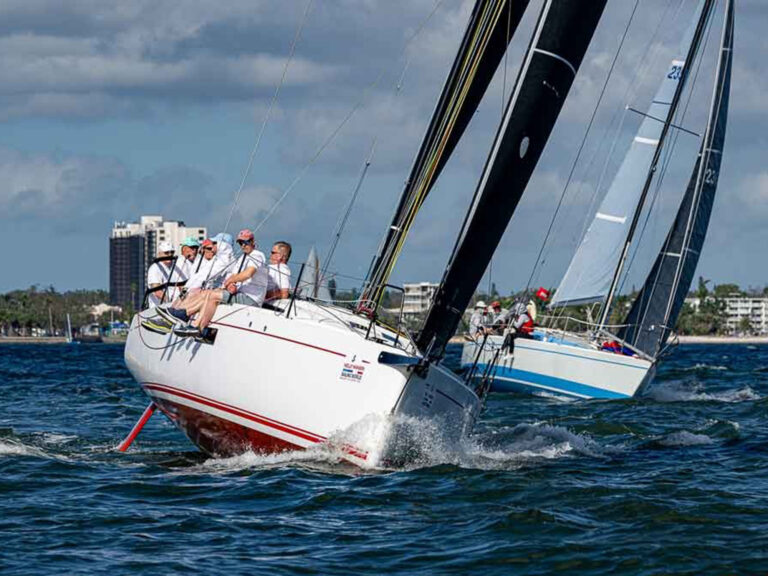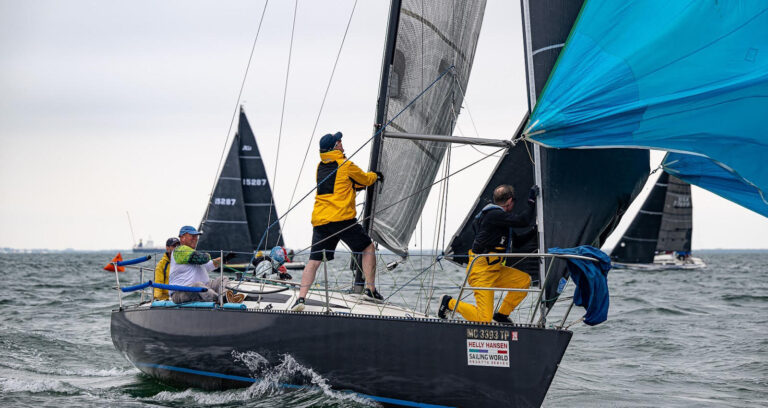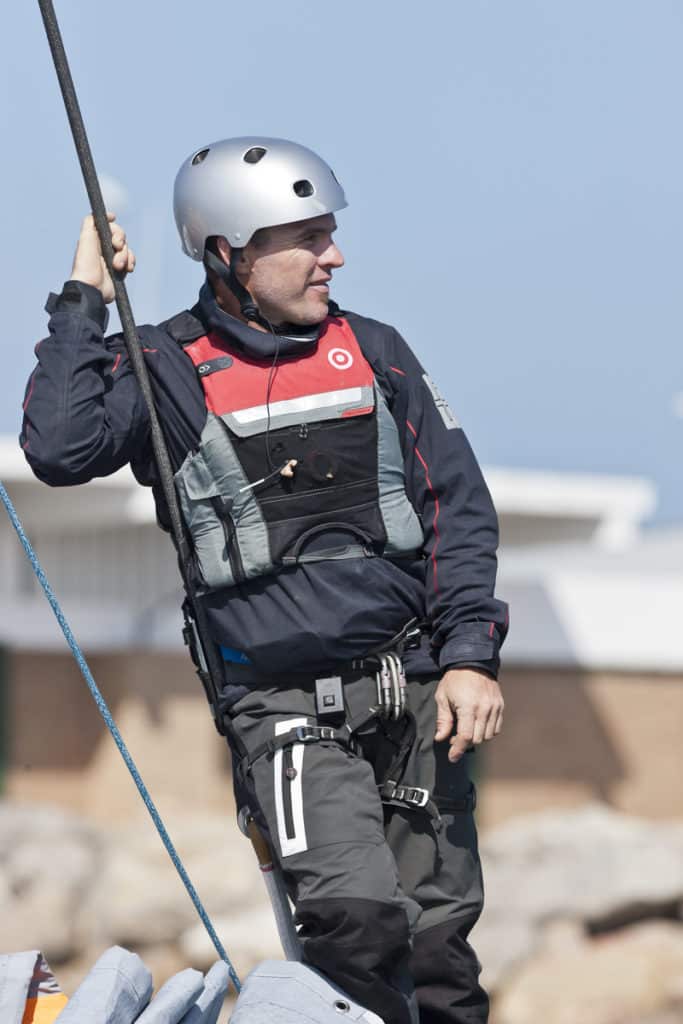
130415_Blewitt
Canadian Curtis Blewett likes to switch gears between America’s Cup campaigns, turning to his other passions to recharge after the intensity of a Cup effort. Between doing bow on Alinghi’s big cat for the 2010 Cup in Valencia and being snapped up by Artemis Racing for AC34, Blewett ditched salt water for his hometown mountains in Whistler, B.C., where he spent time paragliding and skiing with his wife, Monique, and 4-year-old son, Valentino. It wasn’t all wine and roses, however. He snapped his Achilles tendon in a spectacular ski crash, and spent 8 months rehabbing the injury. He says he’s now 100 percent, which is good given all the extra running he’s doing on the AC72.
Michelle Slade: What are the differences working this AC campaign versus your previous one in 2010?
****CB: There’s a lot of similarities really because with Alinghi in the big cat we were learning as much as we were working. The decisions came pretty fast, and you had to respond really quickly. We’re doing that again here. There were only two teams in the last Cup, and I was lucky to be on one of those teams because I think that’s been an eye opener for a lot of people who didn’t do a big boat last time and haven’t raced since 2007. You have to be able to adapt and learn really quickly in the first generation of a class. We haven’t had such a fresh start since San Diego and the first generation of the Version 5 boats, so there are a lot of challenges.
Describe your role at Artemis.
****CB: I do the bow on the 45s, and the pit, floater, grinder on the big boat—just like on the Alinghi cat. Everybody pretty much grinds on the big boat. The crew side of things is very physical; the gym aspect of it has really stepped up for all the guys. We train a lot harder than we used to, though I don’t know whether that’s the new kind of boat or being 40 rather than 30. I really enjoy it; my role was always pretty physical on the other boats anyway. My overall role with the team is very similar to what I’ve had on all the big teams I’ve worked for—working on the rigging side of things in development, as well as the crewwork and sailing on the boat. I work a lot on just the team, trying to gel the team, making sure everyone’s getting along, and moving that along.
What are the similarities if any between the Alinghi catamaran and the 72?
****CB: I think a lot of things from that boat have ended up on these boats, especially the carbon rigging underbodies and the bowsprit suspended from the wing. The 72s are basically a blend of the wing of USA-17 that won the Cup, and the undercarriage and the general concept of the Alinghi cat. It’s not surprising because those two designs teams have all worked together.
Was it surprising that Alinghi opted out this time around?
****CB: I wasn’t surprised at all; I thought it was a good decision by Ernesto. I hope he comes back. I think that group of people and team was so tight that they were always going to be a threat in any class as a challenger or defender. It was always going to be a powerful team and thus always a good target for hassle, so I think he’d had enough of having the fun taken out of it, and he’s taken a well deserved break after three Cups.
Describe the transition from the 45 to the 72.
****CB: The team we have now had solid big boat experience from the beginning. The sailors who were chosen are all good on the 72. I think it would be easy if you were running just your dream 45 crew to get into issues down the road with not having enough big boat experience.
How quickly are you getting up to speed on the 45 with foiling systems?
****CB: It’s going well, and I’m happy with how quickly we’re learning. It looks tricky to me, but Nathan doesn’t seem to have a problem with it!
What areas do you think Artemis need to keep working on to improve?
****CB: We’ve had some nice days with Oracle; those are really helpful. We learn a lot whenever we line up with those guys. We obviously need to work on the foils. I think for all the teams the reliability is going to be the big issue, sailing the heavy air on the Bay: cold weather, cold water, and really windy. That’s going to be on everyone’s mind once they get their boats sorted out. There’ll be plenty of opportunity to throw your program away with a couple of bad decisions. If it happens to anyone from this point on, it’ll take them out of the competition.
How’s the general atmosphere at the team?
****CB: We are not on the easiest road because we’re working on the foils, but it’s going well otherwise. We have a really strong shore team; they’re as good as any shore team I’ve ever worked with. They really have a lot of depth of character and have probably been the steadiest through this whole thing. They’ve carried the team along, and it all rubs off. The strength of those guys and their commitment has been an example to the rest of the team.
Do you think this AC is about the boat, or about the crew?
****CB: This AC I think is the total package, because it’s the first of the class. It’s much more high performance and the whole thing has been amplified: the crew work, the physicality, the maintenance, the racecourse has changed. There are new things to learn, new rules, and the technology is obviously much trickier. It’s quite something just to get a 72 out on the water. To win, you need a lot of smart people.
How do you think the Challenger series will be with just three teams?
****CB: It’s more than we had in the last Cup. I think it could be pretty exciting. It’s a long duration of racing, but in the end, the America’s Cup is about the Defender. It always comes down to that. It doesn’t seem to matter whether there’s 20 teams or three teams, there’ll be some pretty good sailing on the water from the best groups. There are fewer in the B group, but the A group is still there, and you’re still going to see a heck of a show come September.
**Compare working in the AC to other sailing programs you do.
****CB: **In the Cup there are more variables, and it’s a longer time so there are more small decisions that you have to make well over a longer period of time to do well. The rules are very open so you can get off track, and it takes a lot of focus and perseverance to stay on the path. But I enjoy that because you’re obviously rewarded for making those decisions.
How do you find transitioning from one Cup to the next gig, back to AC, etc.?
****CB: I find sailing changes particularly fast to be honest, and I’d prefer to focus on the big events and take more time off in between, which allows you to be fresh and fit, everything under control with the family and happy to start the event. You enjoy it and do a better job with a Cup team rather than if you try too hard to do too much other work in between. I really think if you’re going to focus on the America’s Cup, it’s complicated enough that you really need to just stick with that.

